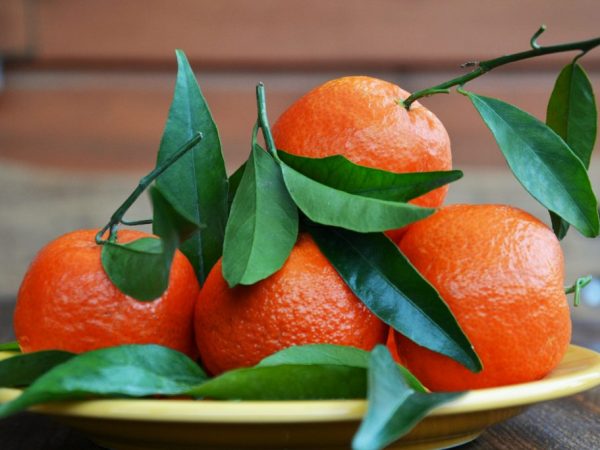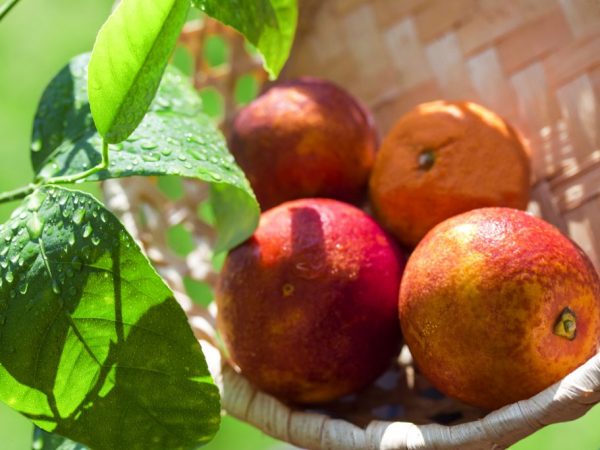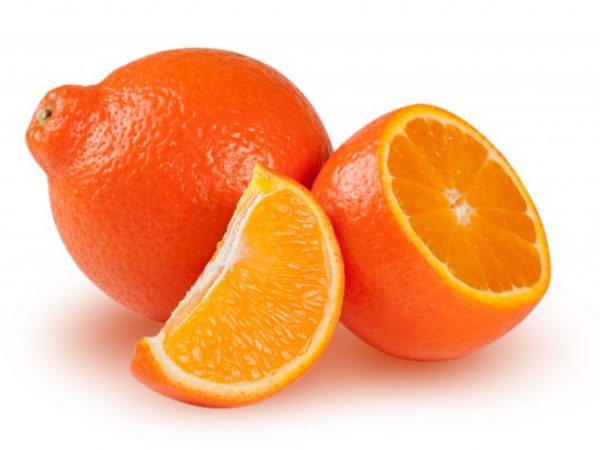Characteristics of red tangerine
Scientists are breeding hybrid fruits and vegetables to create unique plants. They are distinguished by resistance to weather conditions and diseases, unusual appearance and taste. Among the hybrid citrus fruits, red mandarin is a prominent representative.

Characteristics of red tangerine
Hybrid and variety
Hybrids are produced by crossing several plants. With this selection, substances dangerous to humans are not used. This means that the products are not at all dangerous to eat.
A variety, unlike a hybrid, is a selectively selected group of plants. Their advantage is that they can re-grow seedlings from their seeds, while fruits from hybrids are unlikely to come out.
Description of red tangerine
Mandarin is so called because it was obtained by crossing. Scientists have developed a mixture of blood orange and tangerine.
And the bloody orange itself was obtained by mutating an orange with pomelo and tangerine. Its main difference from ordinary tangerines is the reddish skin of the fruit. In addition, mandarin has a number of features:
- There is also pigmentation inside.
- The pulp is bright red with white veins and a pronounced color of the lobules.
- The fruit is simply cleaned and disassembled.
- It has a sweet taste with a slight sourness.
In addition to red citrus, breeders received orange or yellow tangerines and even crossed tangerines and limes (the Indian variety of green fruit is called Rangpur).
How did the red color turn out?
Anthocyanin pigment is responsible for such a bright color. Breeders got it from flowers and grafted onto citrus fruits. There are no red citrus fruits in nature. The degree of brightness depends on the conditions in which the fruit was grown: on temperature, humidity, care. Some fruits even have a red-blue color.
The benefits of anthocyanins are that they:
- They are antioxidants that reduce the risk of many diseases.
- Used to prevent diseases of the cardiovascular system.
- Reduces the risk of cataracts.
- Helps avoid diabetes.
- Suitable as a prophylaxis against bacterial diseases.
- Contains a lot of iron, calcium and vitamin A.
Also, anthocyanins are not high in calories, so red citrus hybrids are acceptable for a diet. Fresh fruits have a low anthocyanin content, so they are freeze-dried.
Citrus of an unusual color should be used with caution by people with allergies and individual intolerance to anthocyanins.
Fruit varieties

It is impossible to grow a red tangerine at home.
The most popular types of citrus fruits are Tangelo, Tangor, Minneola, Clementine, Ellendale, Fallglo, Sunburst. It is impossible to grow a red tangerine at home, so you will have to be content with purchased fruits.
Tangelo
Hybrid of mandarin and pomelo (grapefruit). The variety took a large fruit size from the pomelo. It was given the name "honey bell" for its mild sweet taste and the handle on the fruit.Fruit with well-separating and juicy slices.
Tangor
A mixture of tangerine and sweet oranges. Usually ripens in winter. Description of fruits:
- slightly flattened;
- less than oranges;
- juicy and sweet pulp;
- the peel is bumpy and thick;
- there are many pores on the skin.
It also peels off easily.
Clementine
The most popular of the named types of citrus. It is characterized as follows:
- medium to small fruit size;
- fruits are juicy and soft;
- sweet taste with sourness;
- the skin is orange.
The fruit usually ripens from December to March. Seed varieties are classified in the Montreal subgroup. The name of the fruit was given by the name of the priest who brought it to Algeria.
Minneola

Minneola fruits have few seeds
It is a mixture of tangerine (a special kind of citrus) and grapefruit.
Description of fruits:
- Elongated with a characteristic neck at the top.
- The color is red-orange.
- They can be both small and large.
- There are few seeds inside.
- The pulp has a tart tangerine taste and a pronounced aroma.
Minneola ripens in December-February.
Ellendale
Three fruits were chosen for crossing: tangerine, orange and tangerine. Ellendale fruit is characterized by:
- lack of seeds;
- large fruits;
- the pulp is sweet and sour;
- fruits of red-coral color.
Fallglo
This variety has a thick red-orange skin. The fruits taste sweet and sour and are usually large, there are almost no small ones. Outwardly, it is similar to other types of unusual citrus.
Sunburst
Description of fruits:
- small size;
- unsweetened tender pulp;
- beautiful glossy peel of red-orange color.
The smell of the fruit is mild, with hints of orange.
Using red tangerine
This unusual fruit is used to make marmalade, decorate cocktails and desserts with it. It is easy to get a red zest from the peel.
Red tangerine is used in cosmetology - oil for skin and hair is made on its basis.
Anthocyanin is used as a natural color and food additive. It is obtained from blue cabbage, black carrots, currants. Recognized labeling is E163, so do not be afraid to buy products with this component - they are safe for the body.
Conclusion
The unusual red tangerine is obtained by crossing different citrus fruits. It owes its color to the natural dye anthocyanin, which has many beneficial properties.

